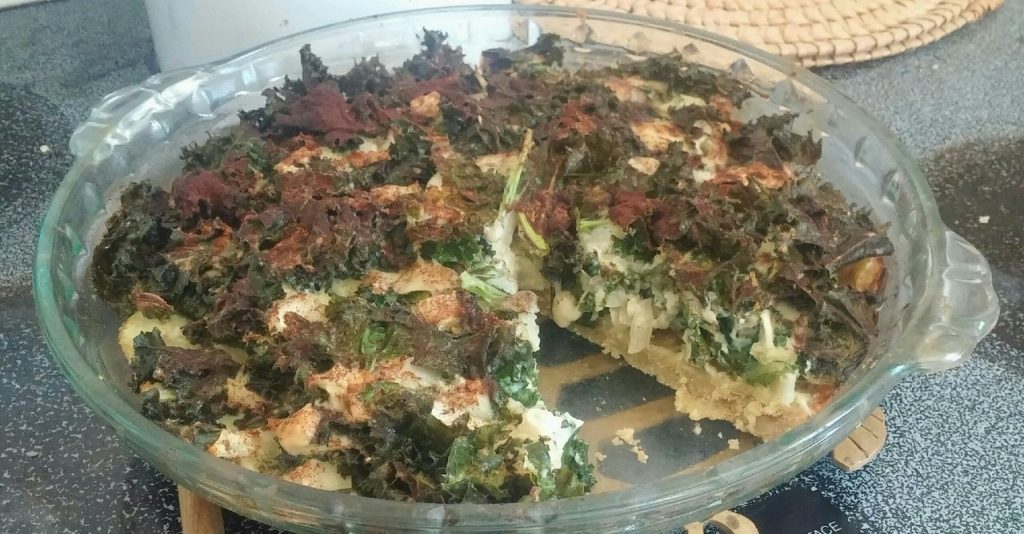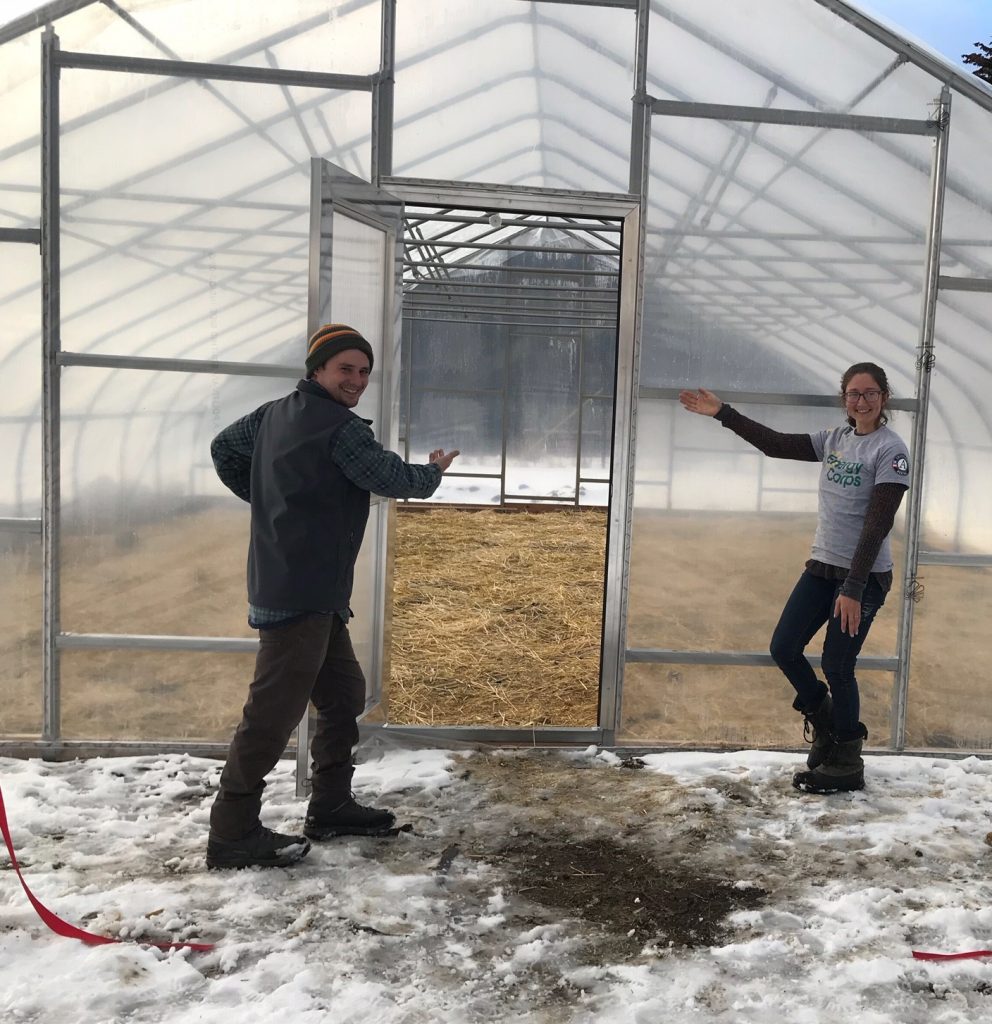By Victorian Tilley
I felt like this was a good opportunity to highlight one of my favorite, comforting meals: Spanakopita. Spanakopita (spinach pie) is a Greek dish that is much like a quiche. Don’t worry, it’s not an entire pie made of spinach.
I thought of this dish after one of our last harvests of the season on the SIFT farm. We were able to gather 13 pounds of mixed greens (kale, bok choy, mustard, Swiss chard, and mizuna) in October and November from one of our high tunnels. Not only were we able to extend the season for our leafy green crops, we also managed to grab 26 pounds of squash and zucchini, as well as help a few tomato plants along and harvested the last 7 pounds from them in November. Tomatoes in November! In Montana! Season extension is one of our primary focuses on the SIFT Farm. Growing fruits and vegetables in Butte’s climate (we are in Zone 3a) can be quite challenging, therefore making it even more challenging to demonstrate to others easy and efficient ways to grow food. With the help of high tunnels and greenhouses, we are able to capture the sun’s energy and protect the plants from the elements in order to keep them alive and healthy.
Our goal is to educate the community on how they may play a part in improving our food system. We also want to be able to grow food for as much of the year as possible, so we may focus on donating our bountiful harvests. We have just recently completed one of two new 14-foot tall and 36-foot long high tunnels that will boost production and become a primary tool for season extension. In general, high tunnels (aka “hoop houses”) and greenhouses are similar in that they are protective structures that are typically covered with polyethylene, a material that efficiently captures heat from the sun and protects plants from wind, rain, snow, etc. The grower is able to control water and air flow and, with the use of shade cloths, sun exposure when summer gets a little too hot. The difference in the structures is that a greenhouse usually includes automated heating and ventilation systems, and high tunnels do not. Sides that can roll up and be secured halfway up the high tunnel are usually utilized in a high tunnel structure.
In addition to having protective structures, it’s important to also consider which crops and cultivars of each crop grow best in such an unpredictable climate. Technically, the growing season in southwest Montana is about 60 days long. That’s not a very big window for plants to reach maturity, so it’s important to plan ahead and plant crops that do really well here and to also start the plants indoors a few weeks before the last frost. For example, crops like kale, spinach, broccoli, and root crops like turnips and carrots grow well in cooler temperatures, but specific varieties like Red Russian kale and Gazelle spinach do well in Butte’s particular climate. These season extension techniques are important to understand and implement to produce fresh produce for much of the year as well as educating others on how they can do so, too. What is also important to remember is that sometimes the focus of educating folks on growing their own food masks the reality of what these folks actually know what to do with the food. While pursuing ways to increase locally grown food, it’s also crucial to understand what the community values, how the effort fits, and what and who needs to be in place to connect all the dots.
So what to do after you have grown all of this colorful, nutritious produce and were able to extend your harvest? You make easy, yummy dishes like this one!

Traditionally Spanakopita is made with phyllo dough with a dense filling of spinach and other greens like kale and Swiss chard, onions, feta cheese, eggs, and herbs. The pie is assembled by layering phyllo dough on the bottom of the pan, then the filling, then more phyllo dough. It’s a pretty simple dish that can be altered to your tastes or dietary needs. For me, I like to use bleu cheese more often than feta. Also, the recipe I am including is a gluten-free version. I am not a gluten-free person but I find this way of preparing it to be very yummy, easy, and fun to make. If you try the phyllo version of it, let me know how it goes! J
Spanakopita
Crust:
1 1/2 cups almond flour
1/4 cup arrowroot flour (or gluten-free flour of your choice)
1/2 tsp salt
4 tbsp olive oil
1 egg
thyme & garlic powder
Preheat oven
to 350 degrees
Mix all ingredients well, grease pan (this recipe is for an average-size pie
pan), press crust evenly into pan, bake 7-10 min’s (just to slightly prebake
the crust)
Filling:
1 hearty bunch of chard, kale or spinach (or a mixture of all three)
1 bunch of parsley
1 bunch of green onions (or 1/2 regular onion if you don’t have green onions)
Chop all of these ingredients or use a food processor.
Dump all
greens into a large bowl and mix with:
1/4 cup olive oil
1 tsp salt
1/2 tsp pepper
4 beaten eggs
1 cup grated feta cheese
Mix well. Scoop into pie crust and form the top with a spatula, pressing firmly. Sprinkle the top lightly with cinnamon. I would recommend NOT skipping the cinnamon, unless you are allergic or just don’t like it.
Bake for 45 minutes. Cover if edges begin to brown too quickly.
Let cool for 5 min, slice and serve!
Recipe from Lindsay Wilson, www.madhupamaypop.com








